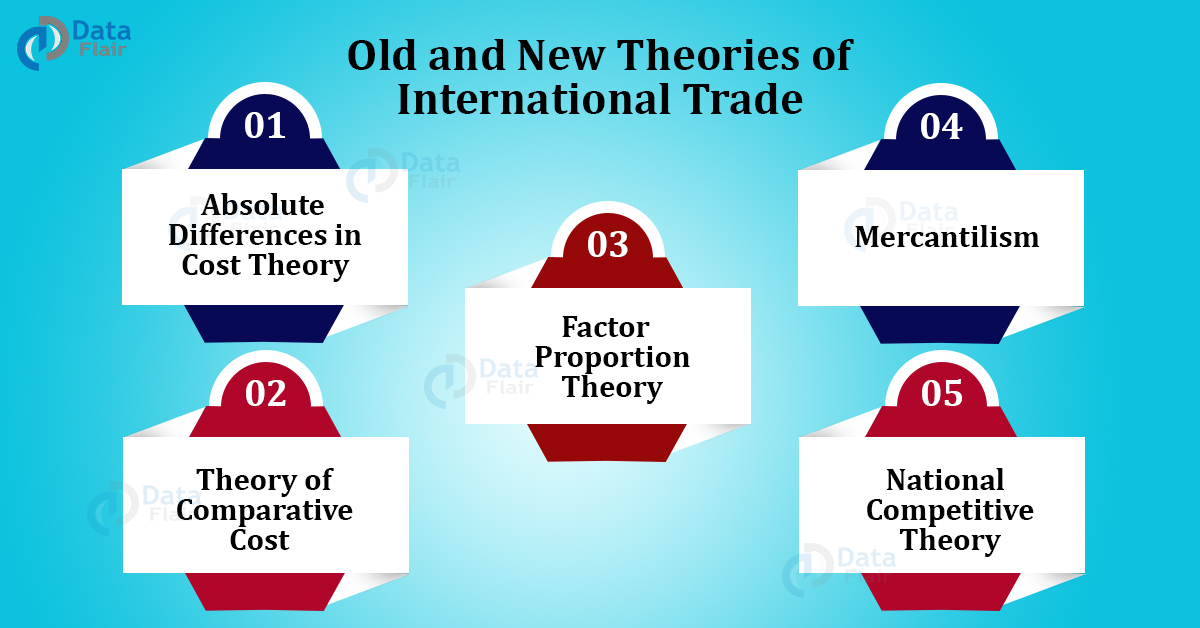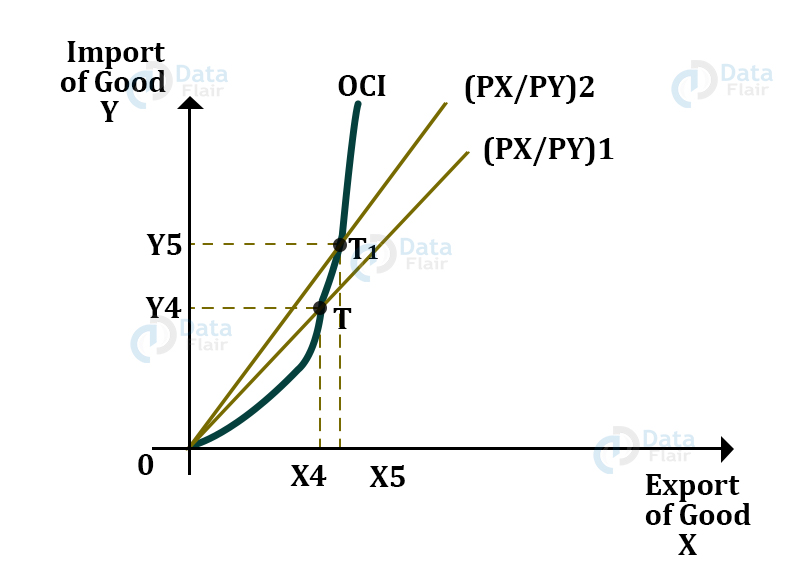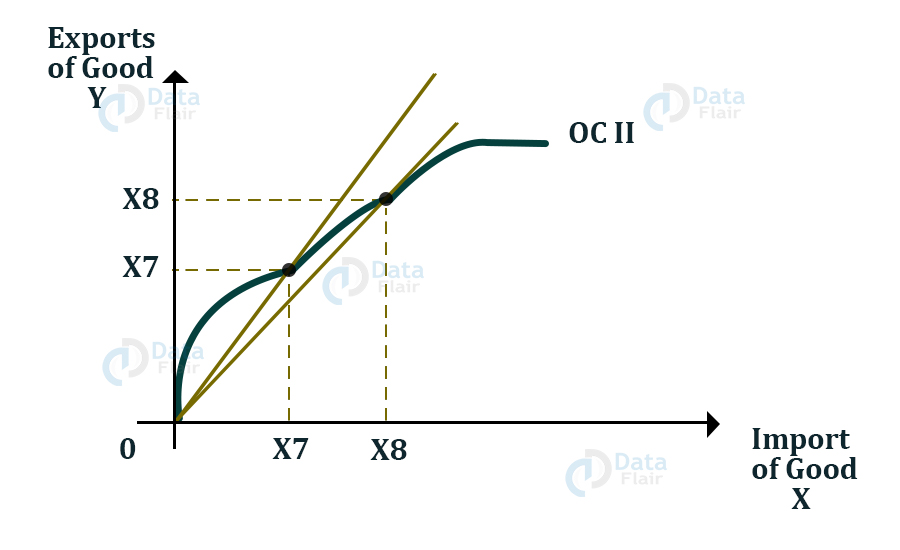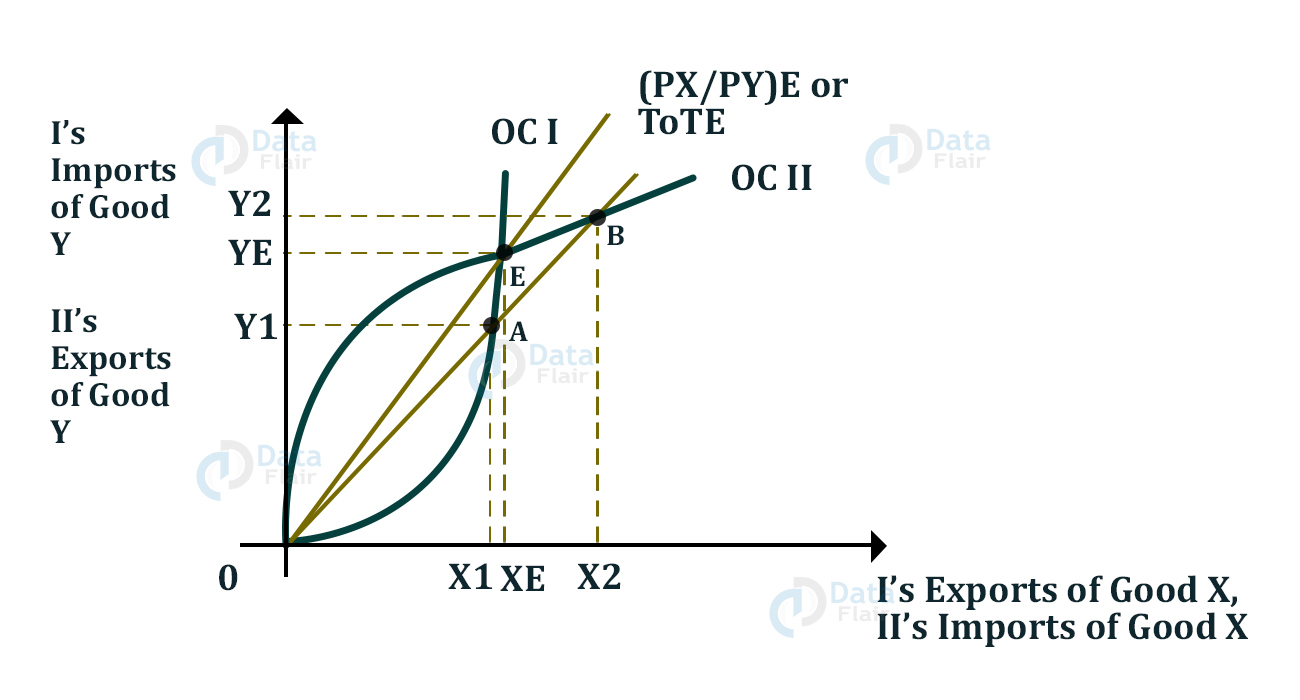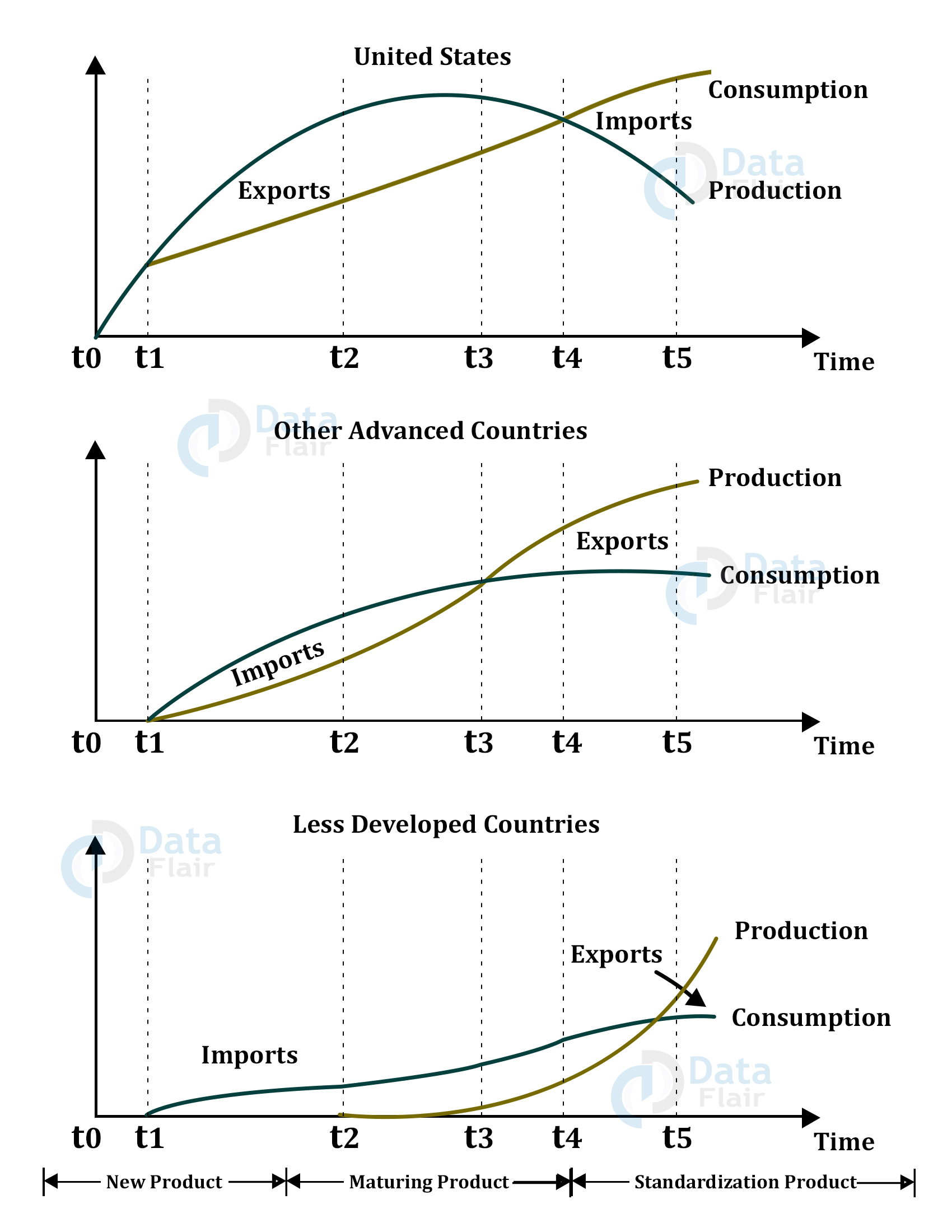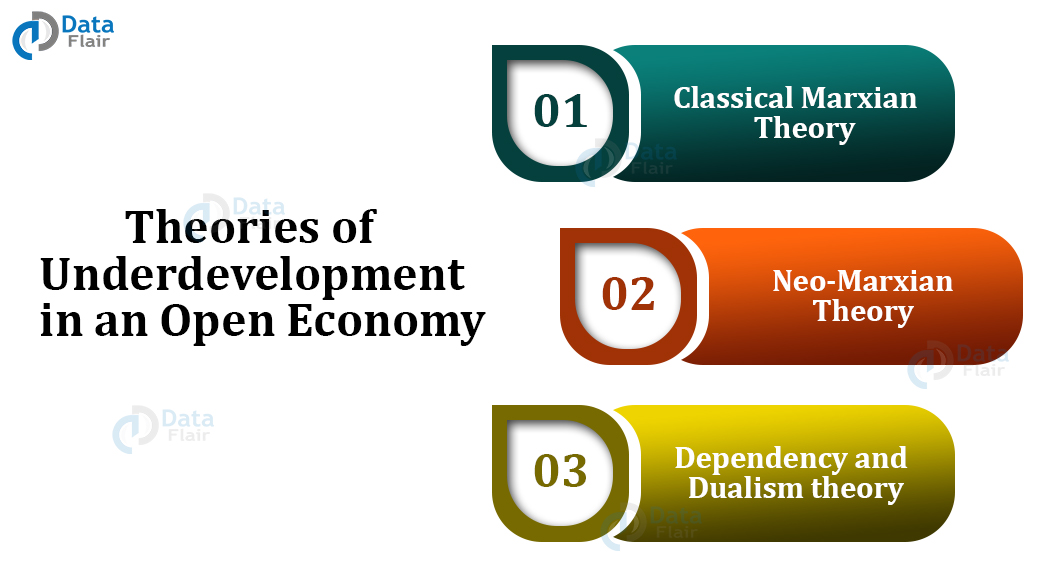International Trade Theories – Old Theories and New Theories
Are you ready for UPSC Exam? Check your preparation with Free UPSC Mock Test
International Trade is the trade of goods and services that takes place across international borders. Unlike domestic trade, it also involves border costs, time costs, and other costs.
Some of the theories that explain the importance of international trade are the absolute difference theory, the theory of comparative cost, factor proportion theory, Mercantilism, National Competitive Theory, and more.
let us learn about them in detail:
1. Absolute Differences in Cost Theory of International Trade
Adam Smith came up with this theory. Adam Smith was a Scottish moral philosopher and a pioneer of political economy. He stated that trade between the two nations depends on the absolute advantage.
When one nation is more efficient than the other in the production of one commodity but is less efficient than the other in the production of a second commodity, then both the nations can gain by each specializing in the production of its absolute advantage and exchanging part of its output with the other country for the commodity of its absolute disadvantage.
However, the critics state that Adam Smith lacked behind in explaining the reason behind the trade between the two nations when one of the trading nations does not have an absolute advantage. They believe that this theory explains only a very small part of world trade.
Supposedly, there are two countries, A and B. Here, A is better at producing tea and B is better at producing Coffee. Also, due to the efficiency of Country A in producing tea, it takes less time to produce tea than Country B. And the same happens with Country B in the case of Coffee.
Now, rather take higher time in producing Coffee, Country A will prefer to import it and likewise, Country B will find it profitable to import tea rather than producing it at a higher time and cost in their own country.
In this case, Country A will end up importing coffee and exporting tea. And Country B will end up importing tea and exporting Coffee. This is what the absolute cost theory is trying to say.
2. Theory of Comparative Cost
David Ricardo gave the theory of Comparative Cost. He agrees to the study of the Absolute Difference theory. However, it helps to explain one of the drawbacks of the theory of the Absolute difference.
Some of the assumptions of the theory of Comparative Cost are –
- The supply curve for any goods is horizontal.
- There is full employment in the economy.
- Perfect competition in the product and market.
- No governmental intervention in the form of restrictions to free trade.
- Zero transport costs.
- Labour is the only primary input to production.
- The relative ratios of labor at which the production of one good can be traded off for another differ between countries.
- Fixed technology.
- Every country has a fixed endowment of resources where all units of a particular resource are identical.
- The factors of production are perfectly mobile between the alternative productions within a country.
- Factors of production are immobile between countries.
The trade between the two countries can be jointly advantageous as long as the difference in comparative advantage breathes between the productions of two commodities.
Ricardo believes that International trade is mutually profitable even when one of the countries can produce every commodity more cheaply than the other.
For example, there are two countries, A and B. Country A produces 1 unit of Cloth in an hour and Country B produces 1 unit of Cloth in 2 hours. In the same way, Country A produces 1 unit of Chips in 3 hours and Country B produces 1 unit of Chips in 4 hours.
Here, Country A has an absolute cost advantage in the production of both the commodities because it requires lesser labor hours in the production of Cloth and Chips which is 1 hour per unit of cloth and 3 hours per unit of Chips.
It shows that country A is twice as productive as country B in Cloth production whereas in Chips production it is only 4/3 times as productive as Country B. Hence, Country A has a higher comparative advantage in the production of Cloth.
3. Factor Proportion Theory for International Trade
Eli Heckscher and Bertil Ohlin came up with the Factor Proportion theory. They said that it is not only the technological differences that promote International Trade but also the factor endowments.
The capital abundant nation will tend to specialize in the production of capital intensive goods and export the product, while the labor abundant nations will tend to specialize in the labor-intensive goods and export that product.
Therefore, It is possible for both the trading economies to consume more of both the goods than in the absence of trade, and consequently, both countries gain from trade.
Example. In the case of a capital abundant country, the cost of capital will be relatively low. As a consequence, the cost of production of the capital intensive product, and its price, will be relatively low.
The opposite will befall in a labor abundant country – wages will be relatively low and the cost of the labor-intensive products will be relatively low. Differences in relative prices of the two goods will lead to a trade.
Both the countries will produce more of the good on which they have a comparative advantage.
The capital abundant country will tend to specialize in the production of the capital intensive goods and export this product, while the labor abundant country will tend to specialize in the labor-intensive goods and export that product.
4. Mercantilism
This theory flourished during the 1500s as there was a rise in the new nation-states. Also, the rulers of these states wanted to strengthen their nations.
The only way to do so was by progressing exports and trade. Due to this, these rulers were able to collect more capital for their respective nations.
They boosted exports by putting limitations on the imports of goods and services. This approach is called “protectionism” and it is even used in contemporary times.
5. National Competitive Theory
Micheal Porter gave this theory. It states that the qualities of the home country are essential for the success of a corporation. The theory is in the shape of a diamond.
It explains the factors that influence the success of an organization. There are 6 Model Factors in this theory which are also known as its determinants.
They are Factor Condition, demand condition, related and supporting industries, firm strategy, structure, and rivalry, chances, and the government.
Terms of Trade and Offer Curve
The ‘terms of trade’ is the international price ratio. It is the ratio of the price of exports to the price of imports.
In the case of two trading countries, because one country’s imports are another’s exports, the terms of trade of one country are just the inverse of the terms of trade of the other country.
The domestic equivalent of the terms of trade for a private individual is the price of the things sold by the individual divided by the cost of the things bought. The terms of trade for a private individual is the nominal real wage divided by the price index or the cost of living.
The Offer curve is also called the reciprocal demand curve of a country. The curve shows the number of imports and exports that a country is willing to buy and sell on the world market at all the possible relative prices.
In other words, it shows the country’s willingness to trade at various possible terms of trade. It is a combination of the demand for imports and the supply of exports.
Considering the two countries to be X and Y, one should look at the following graph:
At point T, the export quantity of Good X equals the import quantity of Good Y. The price ratio can be regarded as terms of trade. The figure represents a steeper price line which means that the country ll will respond by increasing the quantity of Good X that is to be exported.
With this, Country ll’s curve is as follows:
Bringing together the equilibrium of both countries, the new graph comes out to be:
Point E represents the Trading Equilibrium. This is because at point E, the amount of Good X that the Country I wish to export equals the number of goods that the Country II wants to import. The equilibrium terms of trade are denoted by ToTE.
Product Cycle Theory of International Trade
Product cycle theory explicates how specific products were first produced and then exported from one country but through the product and competitive evolution shifted their location of production and export to the other countries over time.
The graphs below represent the trade cycles of a particular product cycle. As the product and the market for the product matures and changes, the countries of its production and export shifts.
We can see in the graph that the product is initially designed and produced in the United States. At this time, the production is highly capital and skilled labor-intensive. The country possesses the income to purchase the product in its new-product stage, in which it was relatively high priced.
Other advanced countries, too, commerce their production at time t1 only continue to be net importers. Moving to the second stage, that is, the maturing product stage. Here, production capability expands rapidly in other advanced countries.
Competitive variations appear as the basic technology of the product becomes widely known, and the need for skilled labor in the production declines. At the time t2, less-developed countries begin their production, although they continue to be net importers.
The competitive advantage for production and export shifts across countries at this time. In the third or the standardized production, the stage sees the comparative advantage of production and export shifts to less-developed countries.
The product is a relatively mass-produced product that can be made with increasingly less-skilled labor.
With this, the United States reduces domestic production and increases imports. Other advanced countries produce and export, although export peaks as the less-developed countries expand the production and become net exporters themselves.
After reaching time t5, the product has run its course or life cycle.
Strategic Trade Theories
The Strategic Trade Theory or the Strategic Trade Policy talks about the policies that are adopted by various countries. These policies affect the outcome of strategic interactions between firms in an international oligopoly or an industry that is dominated by a small number of firms.
The term ‘strategic’ here refers to the interactions between the firms. This theory believes that trade policies can raise the level of domestic welfare in a particular state by shifting profits from foreign to domestic firms. It emphasizes the significance of trade agreements that restrict the interventions.
Trade as an Engine of Growth
A rise in trade can help a nation grow and bloom into a better economy that serves its people and the trade. Some of the positive effects of the trade on a nation are –
- It hampers employment opportunities in the country.
- Trade helps the industries grow.
- It helps to maintain and enhance relations with the trading countries.
- Marks nation’s presence in the world.
- Hampers the Gross Domestic Product of the nation.
Theories of Underdevelopment In An Open Economy
Though there are several theories of Underdevelopment that have been bought up by different economists, the three major ones are the Classical Marxian Theory, the Neo-Marxian Theory, and the Dependency and the Dualism theory.
a. Classical Marxian Theory
The theory is implicit in Marx’s study of the laws of motion of the capitalist mode of production in 3 volumes of Capital.
Marx claimed that the introduction of capitalism in India was a necessary evil. He claims that the prospects for the development of capitalism crucially depend upon the pre-existing modes of production.
He considers the “Asiatic” mode of production as a “prehistoric” in a sense that it had remained in a state of primordial animation and stagnation till the contact with European capitalism.
b. Neo-Marxian Theory
The failure of capitalism helped to encourage economic development in the former colonial regions as Marx had envisaged, and gave a rise to the neo-Marxian theories of underdevelopment.
There is a consensus that the modern capitalist system can be further divided into an advanced “center” or metropolis, and an underdeveloped “periphery”. The causes of underdevelopment become one of the central focuses of analysis.
c. Dependency and Dualism Theory
Here, Underdevelopment is an externally-induced process that is preserved by a small but influential domestic elite who ally with the international capitalist system.
Therefore, systemic and path-dependent is the development of underdevelopment. Here, the concept of hegemony acquires a strategic meaning. From the historical perspective, capital accumulation has been governed by the law of ‘uneven development’.
Critics argued that capital movements tend to increase regional inequality by concentrating on the more developed regions.
Conclusion
This article talked about the importance of trade in various forms and what do the economists around the world think about it. Different economists have given varied theories to explain the importance and the reasons that lead to International Trade.
We discussed the terms of trade and the working of the Offer Curve and the stages of the Product Cycle.
Did you know we work 24x7 to provide you best tutorials
Please encourage us - write a review on Google
